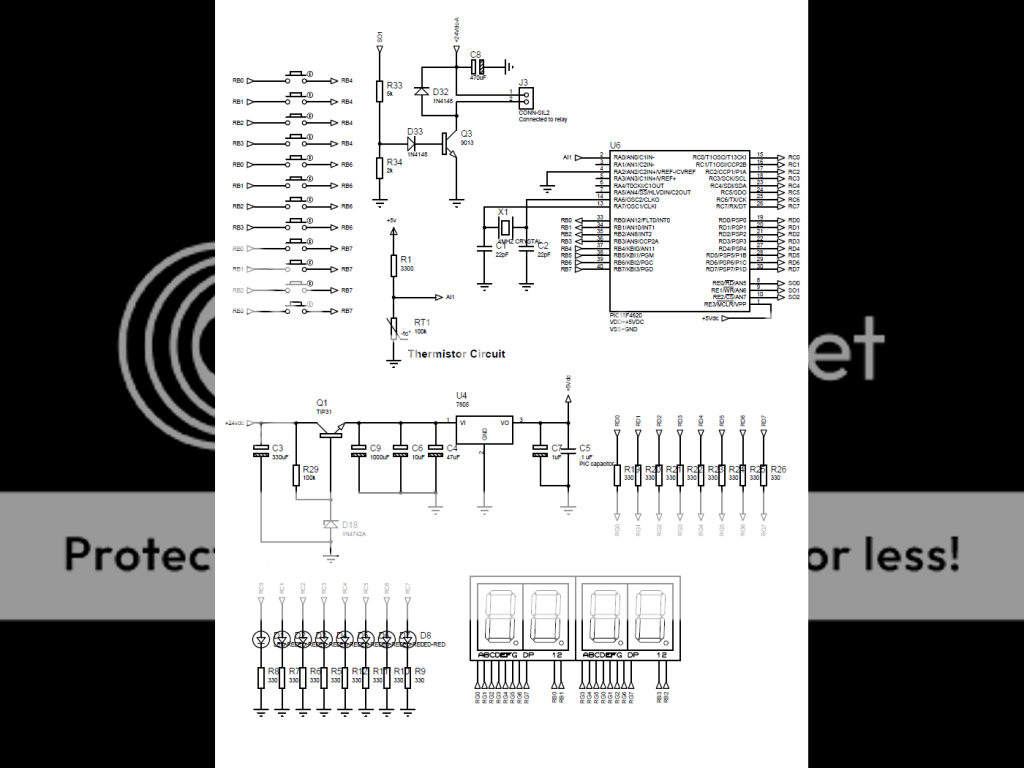lloydi12345
Member level 4
I have made my temperature controller but there's a big problem. With a 320°F setup using a temperature calibrator machine. While my thermistor probe placed inside the callibrator, my controller detects it quite well with a maximum error of 1°F. Sometimes it is 321°F sometimes it is 320°F. Now the problem is that randomly in 15 mins, 30 mins, 40 mins, 1 hour or even two (no particular time really), the temperature display changes to values higher or lower than the real temperature values by 10 values(numbers between 310°F and 330°F). What I'm doing to fix this is to turn off the circuit and turn it on again then everything will go back to normal. I don't think this is right. I think the cause of this is the internal noise but I can't figure out what type or value of capacitor I should add. If it's not the noise then maybe I missed something. I attached my schematic below. C5 is the ceramic cap near the microcontroller.
**broken link removed**

Thank you guys.
**broken link removed**

Thank you guys.
Last edited: